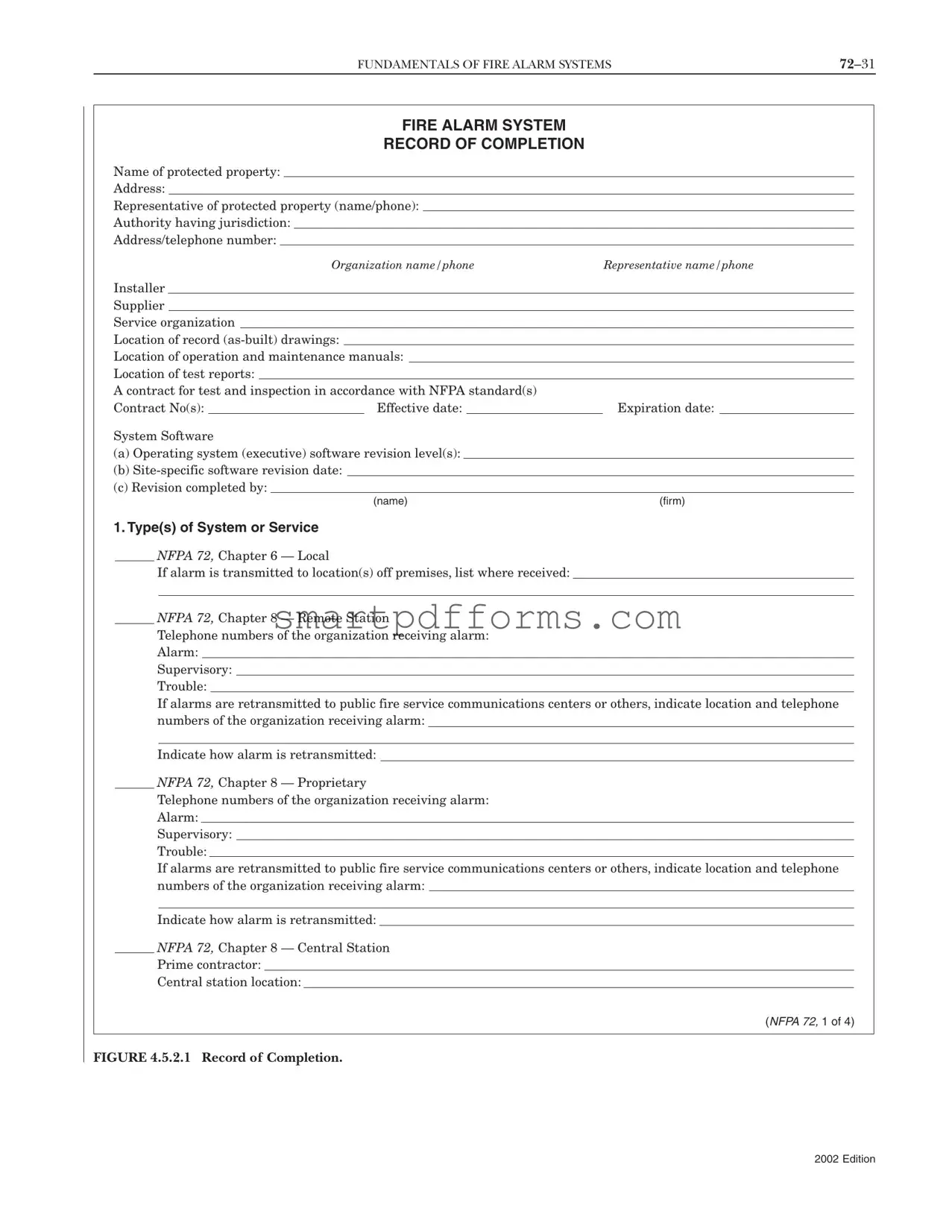FUNDAMENTALS OF FIRE ALARM SYSTEMS |
72–31 |
FIRE ALARM SYSTEM
RECORD OF COMPLETION
Name of protected property:
Address:
Representative of protected property (name/phone):
Authority having jurisdiction:
Address/telephone number:
|
|
|
|
Organization name/phone |
Representative name/phone |
Installer |
|
|
|
|
|
|
|
|
Supplier |
|
|
|
|
|
|
|
|
Service organization |
|
|
|
|
|
|
|
|
Location of record (as-built) drawings: |
|
|
|
Location of operation and maintenance manuals: |
|
|
Location of test reports: |
|
|
|
|
|
|
|
A contract for test and inspection in accordance with NFPA standard(s) |
|
|
Contract No(s): |
|
|
|
Effective date: |
|
Expiration date: |
|
System Software
(a)Operating system (executive) software revision level(s):
(b)Site-specific software revision date:
(c)Revision completed by:
1. Type(s) of System or Service
NFPA 72, Chapter 6 — Local
If alarm is transmitted to location(s) off premises, list where received:
NFPA 72, Chapter 8 — Remote Station
Telephone numbers of the organization receiving alarm:
Alarm:
Supervisory:
Trouble:
If alarms are retransmitted to public fire service communications centers or others, indicate location and telephone numbers of the organization receiving alarm:
Indicate how alarm is retransmitted:
NFPA 72, Chapter 8 — Proprietary
Telephone numbers of the organization receiving alarm:
Alarm:
Supervisory:
Trouble:
If alarms are retransmitted to public fire service communications centers or others, indicate location and telephone numbers of the organization receiving alarm:
Indicate how alarm is retransmitted:
NFPA 72, Chapter 8 — Central Station
Prime contractor:
Central station location:
(NFPA 72, 1 of 4)
FIGURE 4.5.2.1 Record of Completion.




